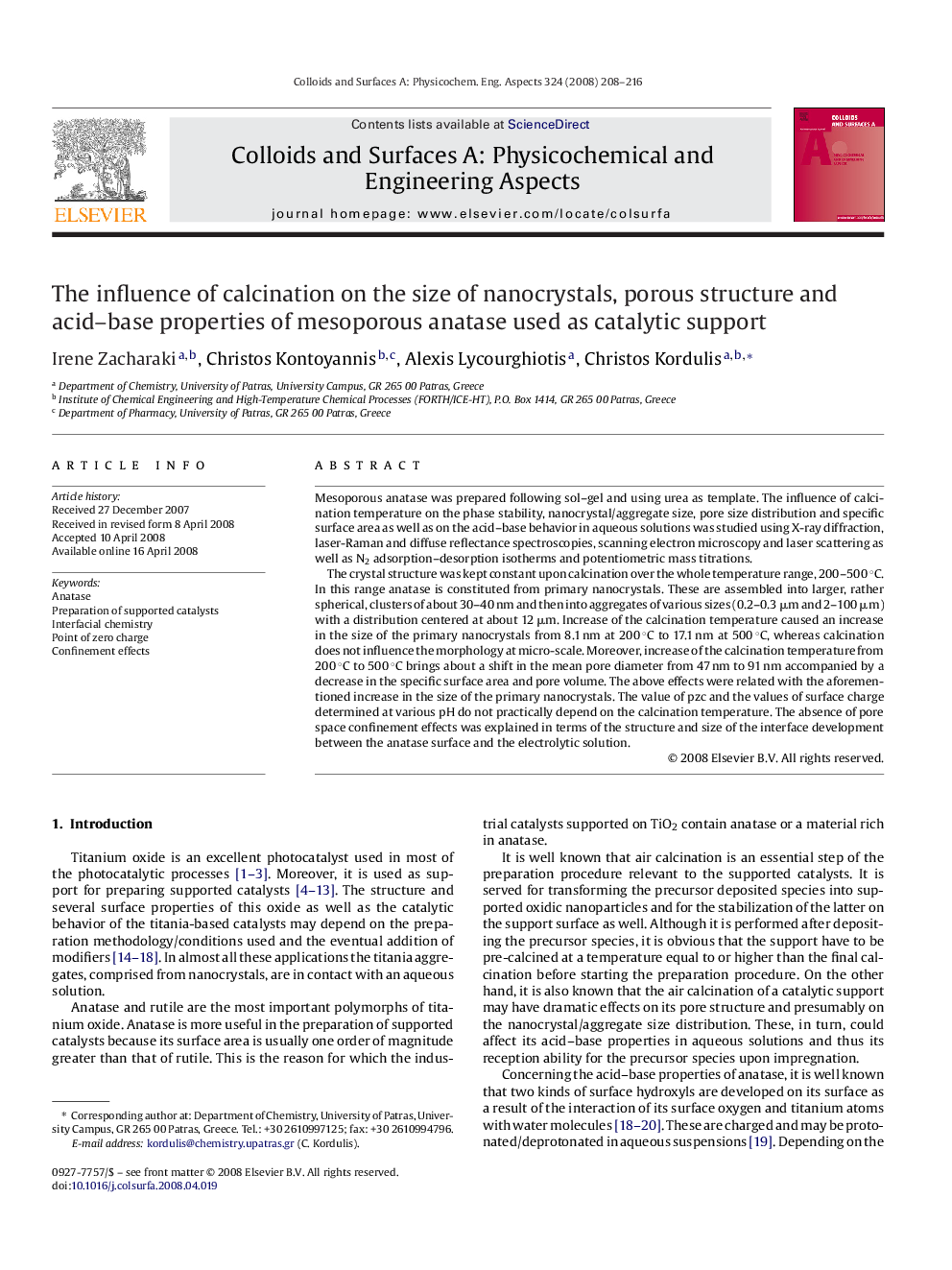| Article ID | Journal | Published Year | Pages | File Type |
|---|---|---|---|---|
| 596605 | Colloids and Surfaces A: Physicochemical and Engineering Aspects | 2008 | 9 Pages |
Abstract
The crystal structure was kept constant upon calcination over the whole temperature range, 200-500 °C. In this range anatase is constituted from primary nanocrystals. These are assembled into larger, rather spherical, clusters of about 30-40 nm and then into aggregates of various sizes (0.2-0.3 μm and 2-100 μm) with a distribution centered at about 12 μm. Increase of the calcination temperature caused an increase in the size of the primary nanocrystals from 8.1 nm at 200 °C to 17.1 nm at 500 °C, whereas calcination does not influence the morphology at micro-scale. Moreover, increase of the calcination temperature from 200 °C to 500 °C brings about a shift in the mean pore diameter from 47 nm to 91 nm accompanied by a decrease in the specific surface area and pore volume. The above effects were related with the aforementioned increase in the size of the primary nanocrystals. The value of pzc and the values of surface charge determined at various pH do not practically depend on the calcination temperature. The absence of pore space confinement effects was explained in terms of the structure and size of the interface development between the anatase surface and the electrolytic solution.
Keywords
Related Topics
Physical Sciences and Engineering
Chemical Engineering
Colloid and Surface Chemistry
Authors
Irene Zacharaki, Christos Kontoyannis, Alexis Lycourghiotis, Christos Kordulis,
